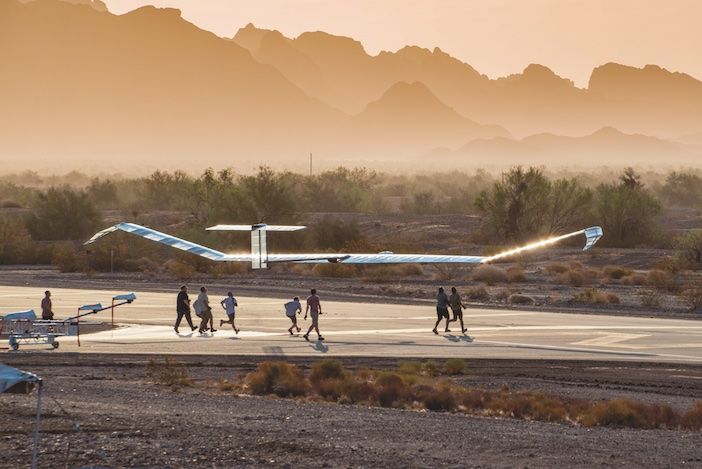by Jack Roper
Through perpetual tropospheric turmoil, aircraft diverge on numberless errands. A calm and crystalline atmospheric layer lies just above them, always out of reach. But broad-winged gliders may soon circle there, persistent and watchful. These solar-powered aircraft are called HAPS, meaning either High-Altitude Platform Station or High-Altitude Pseudo-Satellite, depending who you ask. They share one aim – operationalizing the stratosphere for the first time.
“The Airbus Zephyr is a solar-electric aircraft that flies unmanned in the stratosphere,” says head of the Zephyr programme at Airbus, Simon Taylor. Zephyr has a 25m (82ft) wingspan, weighs just 70kg (155 lbs), can stay aloft for months and is mission-agnostic. “It has military, commercial and institutional applications,” says Taylor. “It can deliver observation or sensing, and monitor wildfires or population movements. It can act as a cell-tower and connect the unconnected of the world.”
Stratospheric aircraft escape the operational limitations of both space and the troposphere. “Satellites move on orbital paths, which makes station-keeping difficult,” Taylor explains. “Conventional aircraft are limited by fuel capacity in the time they stay airborne. HAPS covers the sweet-spot in between.” By day, the Zephyr is powered by solar panels which also charge batteries that drive its two propellers in nocturnal flight. “It can loiter over a point of interest for months on end.”
“Dawn altitude is critical to any HAPS platform,” Taylor continues. Because the fragile Zephyr is native to stable stratospheric conditions, its batteries must store enough energy to keep it there overnight. “Below 55,000ft you enter the realm of unfavorable weather and risk losing the aircraft,” he says. “We’ve closed the power-mass-energy budget to stay above the weather until dawn.”
Energy cycles
BAE Systems and aerospace company Prismatic are aiming for the PHASA-35 (Persistent High-Altitude Solar Aircraft) HAPS to be capable of year-long endurance based on solar-electric charge-discharge cycles.
“Stratospheric flight requires either a non-existent super fuel or daily refueling capability,” says BAE Systems PHASA-35 business development lead, Phil Varty. “We effectively refuel using solar panels, recharging the batteries we discharge overnight.”
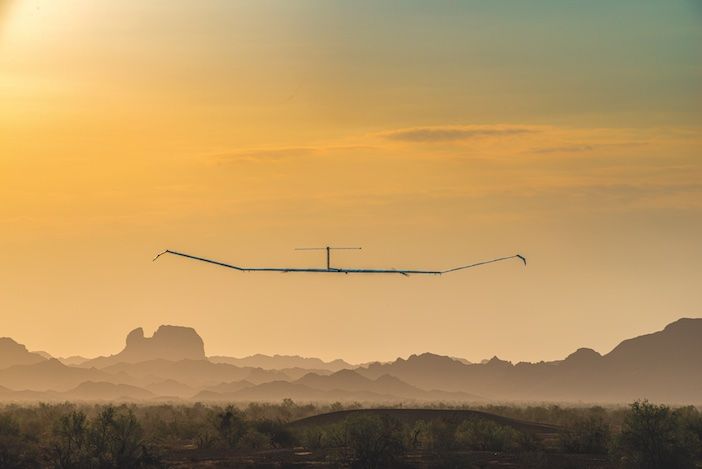
Only above the weather is this energy-cycle sustainable. “The stratosphere has calm weather and two-dimensional layers,” Varty explains. “At lower altitudes, keeping stationary uses more power due to three-dimensional winds.” System-wide efficiency makes persistent energy-cycling possible.
“Our solar cells are paper-thin and flexible,” says Varty. “Only world-leading cells from a specialist supplier can provide our required power-to-mass ratio.” Engineers have opted for phone-type batteries in packs because they proved the most reliable option over time.
“Our airframe’s monocoque design means we can point-load battery-mass in two locations,” adds Conor Crowe an engineer at Prismatic. “It requires fewer heaters and cables than span-loading battery mass and lends itself to higher power density.”
The stratosphere has always been challenging to operationalize, but aerospace technology, batteries and knowledge is enabling the development of HAPS. Taylor says, “The Zephyr must contend with frigid cold and steep temperature-gradients beyond the insulation of tropospheric weather.
“We are at the cutting-edge of what is possible. Our wing-structure combines carbon-fiber and other materials to minimize the airframe’s weight.
“We always design for 65,000ft altitude,” says Crowe. “Our lightweight carbon-fiber composite aircraft structure is incredibly strong and stiff.”
High aspect ratio wings provide the lift-to-drag ratios needed for persistent flight and maintain laminar flow over the aircraft at high altitudes. “Our airfoil blends aerodynamic profiles for efficiency at the pressures those altitudes present,” Crowe explains.
Ground testing
PHASA-35 was tested at hot and cold points that represent the extremes expected during flight. “Our hot case is take-off in 35°C (95°F) at 850 mbar pressure,” says Crowe. “Our cold-points were almost -90°C [-130°F].”
Components were individually qualified in thermal vacuum chamber soak-tests then integrated into hardware-in-the-loop system bench-tests. “We check that components interact as expected and de-risk our software. Then we test the entire subsystem in the vacuum chamber, from both an interaction and thermal perspective,” says Crowe.
Finally, systems are integrated into full-scale critical endurance tests. “We soak-test the complete aircraft in stratosphere-like conditions,” says Crowe. “Power from a ground-supply source simulates the sun. We discharge the batteries and run our day-night cycle for three days.”
Because PHASA-35 has just eleven main components, assembly and structural testing takes under three days. “We weigh and flex the aircraft in whiffle-tree tests to simulate maximum dynamic load. Wing-section bending and torsional-load tests validate our predictive models so we’re confident to fly.”
In February 2020, PHASA-35 made its maiden flight at Australia’s Woomera Test Range. “Our two year development program culminated in a short flight at Woomera,” says Crowe. “The data we gathered confirmed our predicted efficiencies had been correct.”
However, unseasonal conditions when the jet stream shifted south in 2021 prevented flight testing in the stratosphere. “It was still a useful exercise in getting the team to location and running through drills preparatory to flight,” Crowe says.
Temporary grounding hasn’t precluded building an evidence-base for regulatory approval. “We use a quarter-scale aircraft as a subsystems testbed,” says Varty.
Readily flown at lower altitudes, it has been used to test PHASA-35 avionics systems. “Test flights are only one source of development data,” adds Varty. “We are continuing ground-based testing and simulation in parallel to flight-trial planning for 2022.”
Flight testing
In June 2021, the Zephyr stayed aloft for 36 days across two test-flights in Arizona, USA and reached 76,100ft absolute altitude – an aircraft-class world record. The Arizona tests interrogated its operational flight envelope. “We tested its behavior in pitch, roll and yaw and transitioning through the troposphere,” Taylor says.
The first flight-test vehicle’s payload included stress, strain and wind-flow gauges. “It was an in feed to our engineering cycle with respect to margins and system performance,” Taylor says. “The second flight was then about operational service-delivery relevance for a specific customer.
“We tested the clever piece around controlling the aircraft, both automatically and semi-automatically from the ground. Using one control method, we can fly the aircraft over Australia from a UK ground-station.
IP-protected Airbus systems will enable a worldwide operational reach for Zephyr. The Zephyr may combine global range with the observational penetration of the OPAZ (Optical Advanced Earth Observation system for Zephyr) payload, which was on board the HAPS’ second test flight.
OPAZ integrates an Airbus Defence and Space high-resolution camera and automatic ship identification system. “Sensors detect vessels with tracking chips on board,” Taylor explains. “From Arizona, we identified ships 300 miles [480km]away.” The payload’s optical power proved equally dramatic. “One image identifies boats on a river, with wakes clearly visible behind,” he says. “You can see clothes moving on a washing-line from 60,000ft.”
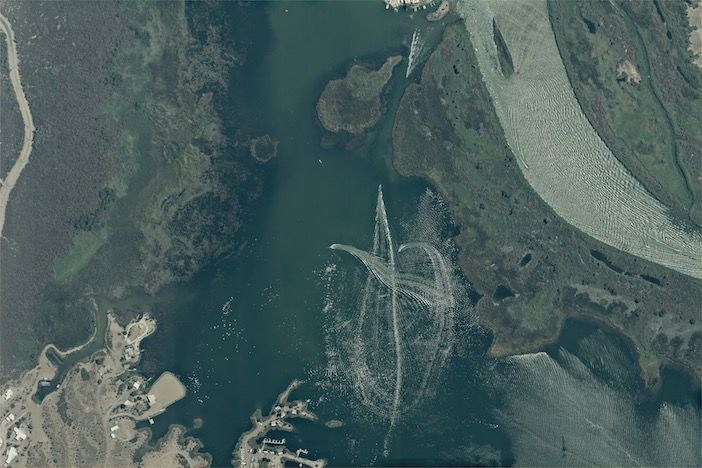
Payloads
PHASA-35’s 15kg (33 lbs) payload-capacity accounts for 10% of its weight. Its ability to carry bulkier cargo like synthetic aperture radars is an important feature. A nose-mounted pod houses the payload. “We create an environment to attach, power and manage the sensors,” says Varty. “Low-pressure air provides a limited cooling-mechanism, so we use other means.”
Crucially, sensors communicate independently from aircraft control systems. “Otherwise, it adds safety complications. Our payload is mission-critical, but not flight-critical,” Varty adds.
The Zephyr encounters little stratospheric traffic, but must align with Federal Aviation Administration (FAA) requirements to safely ascend and descend through busier altitudes when in US airspace. “It is a challenge,” says Taylor. “This is not an A350, but is an aircraft that will stay aloft for weeks.”
Airbus has a detailed roadmap for entry into service. “We secured FAA approval to fly outside restricted airspace this year,” says Taylor. “For the first time, we operated this nature of aircraft above commercial passenger traffic in the USA.”
Applications
In October 2020, another HAPS aircraft, the HAPSMobile and AeroVironment 78m (255ft) wingspan Sunglider, formerly called the Hawk30, attained an altitude of 62,500ft during its fifth test-flight.
“I recalled how the airship in the anime film Castle in the Sky filled me with aspiration,” says HAPSMobile president and CEO, Junichi Miyakawa. “Despite -73°C [-100˚F] temperatures and 30m/sec aerial currents, our endurance tests bore fruit in a successful flight. We communicated with ground-based smart phones and obtained data for fully-automated piloting.”

Another company in the HAPS sector, USA and Canada-based Stratodynamics, already lists an aircraft, the ApusDuo, as available in its service fleet.
“It is an aircraft developed by our collaborators, Uavos,” explains Stratodynamics CEO, Gary Pundsack. The 15m (50ft) wingspan, 43kg (95 lbs) solar-electric ApusDuo features an adjustable tandem-winged geometry and uses autopilot technology developed by unmanned-systems developer Uavos. “It is an industrial grade control system with control-surface feedback loops and a suite of sensors – accelerometers, gyrometers, altitude pressure transducers and an inertial measurement unit,” says Pundsack.
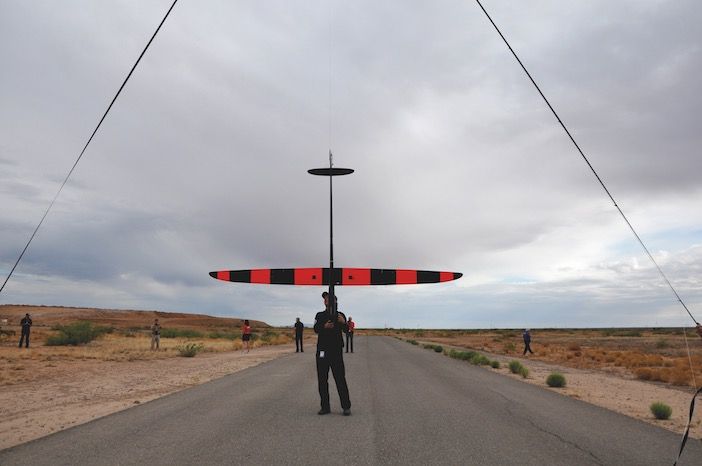
(Photo: Sean Bailey)
Stratodynamics foresees ample commercial demand for the ApusDuo. “We’re working on several trials to prove the business-models,” Pundsack reveals.
The technology is ready, but there are regulatory barriers to commercialization. “We’ve identified areas where we can operate in civilian airspace,” Pundsack adds. “But we need approvals to meet client needs.”
One day, Zephyrs could operate in swarms to deliver regional connectivity. “We could have overlapping circle-swathe footprints, or a diverse swarm payload-mix,” says Taylor. This type of station-keeping begins by commanding two aircraft in isolation without crossover. “We independently controlled one aircraft in flight and one on the ground several times this year,” he reveals.
Varty envisages 100 PHASA-35s flying cooperatively to ensure network coverage across an African country. “It is an interesting challenge in terms of artificial intelligence, automation and weather modeling,” he says. “Rather than manage them individually, we want aircraft themselves to work together in groups.”
For aviation the stratosphere represents a new, uncharted realm. For the time being its phenomena remain imperfectly understood. But the first steps to explore and then operationalize this inhospitable part of the sky are now being taken around the world.
HiDron Flying
Stratodynamics developed the HiDRON after Gary Pundsack and Nick Craine won NASA’s 2016 Space Race Challenge with a retrievable radiosonde. “Because balloons float and drift, 80% of the 75,000 radiosondes launched annually are lost,” says Stratodynamics CEO, Pundsack.
“The HiDRON autonomous glider ascends with a balloon and is released in the stratosphere,” he continues. “It can fly serpentine patterns, linger over an area and perform controllable return flights.”
Battery power enables five-hour, autonomous or remotely-controlled missions. The 3.4m (11ft) wingspan, 5kg (11 lbs) HiDRON has no propellers and creates no vibration or prop wash to interfere with sensors.
The Airbus Zephyr has reached 76,100ft, but the HiDRON recorded an altitude of 111,400ft in 2019. “HiDRON starts flying above 90,000ft and can be an affordable way to test spacecraft equipment in space-like cold and low pressure.”
Stratodynamics has designed its next iteration, the HiDRON Suborbital, to carry 5kg (11 lbs) 5U-shaped Cubesat payloads.
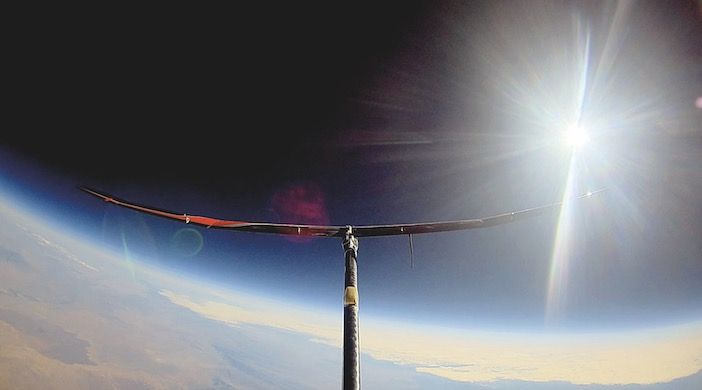
Shared history
PHASA-35 is a 35m (115ft) wingspan, 150kg (330 lbs) HAPS developed by Prismatic and BAE Systems. Phil Varty, BAE Systems’ business manager for UAV systems says, “It has a similar wingspan to a Boeing 737, but a 737 is 500 times heavier. It’s a completely different class of system – an aircraft that operates above normal traffic to provide persistent monitoring or sensing capability.”
The Airbus Zephyr is now on its eighth iteration, the Zephyr S. Originally conceived in 2003 by British defense contractor QinetiQ, the project was acquired by
Airbus Space and Defence in 2013. Airbus recently launched its first production model and opened the first dedicated HAPS launch-site in Wyndham, Australia.
Prismatic was formed by a group of engineers who left the QinetiQ Zephyr team to develop their own stratospheric aircraft concept. “PHASA-35 was developed by Prismatic, which BAE Systems subsequently acquired in pursuit of fast-paced technological advantage,” Varty explains.


